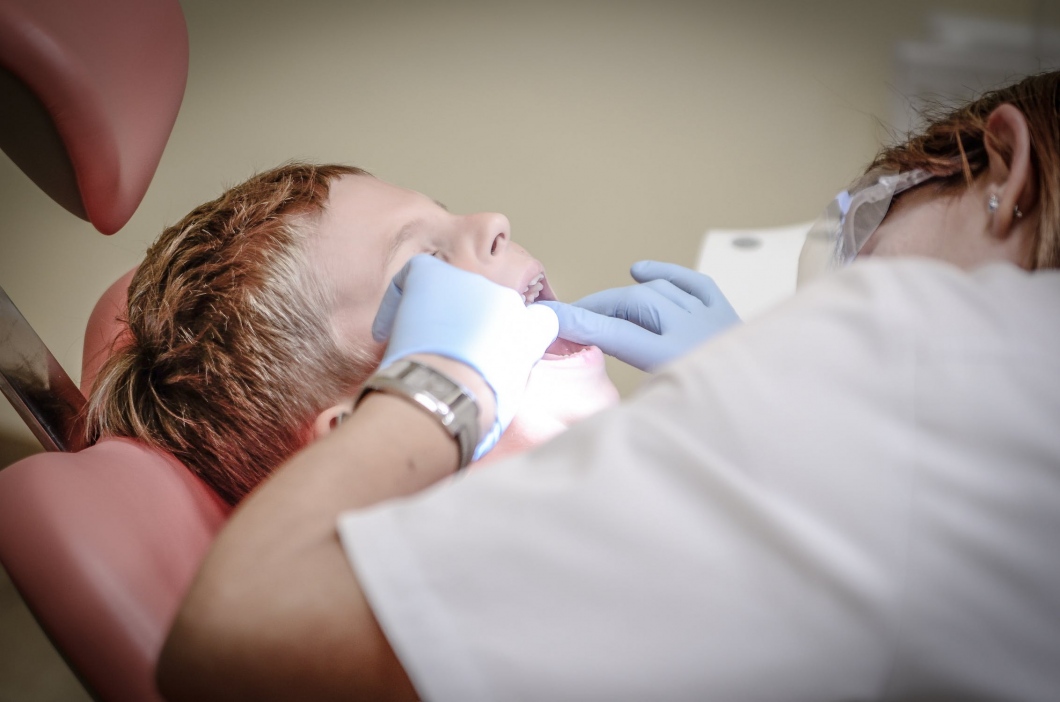It is always nerve-wracking to realize your child is suffering from a dental emergency. Luckily, a pediatric dentist has the experience necessary for taking care of your child’s condition. To help you determine your next step, here are several signs of a dental emergency for children.
Severe Toothache
A toothache is not always a serious condition, and your child may just need to rinse their mouth to remove a piece of food stuck in their teeth. However, a severe toothache could be a sign of a cavity, an abscess, or another serious condition. If you cannot determine the cause of their toothache, contact their dentist immediately.
Sensitive Teeth
If your child experiences pain or discomfort from hot or cold foods and beverages, they may be suffering from tooth sensitivity. There may be an underlying cause such as a cavity, worn-down enamel, or an injury. You want to schedule an appointment right away to diagnose and treat their ailment.
Knocked-Out Permanent Tooth
A knocked-out permanent tooth is a dental emergency that needs to be treated as soon as possible. You need to check your child for injuries, and you need to try to find the missing tooth. If you do find the tooth, carefully pick it up by the crown instead of the root. A pediatric dentist may be able to save the tooth.
Biting Certain Areas
Your child may need pediatric dental care services if they bite down on their tongue, cheek, or lip hard enough to cause bleeding. Start by cleaning the area to prevent infection, and gently apply a cold compress to reduce swelling. Next, use a clean piece of gauze to stop the bleeding. It is still necessary to visit the dentist to ensure there are not any further injures. If your child does need professional help, be sure to look for an expert who has plenty of experience when it comes to working with children. You can read reviews online in order to find the most reputable dentist in your area.
Oral Infection
In many cases, oral infections are not a dental emergency. However, swelling around the jawline or under the mouth, difficulty swallowing or difficulty breathing may be a sign of a serious condition. If this is the case for your child, contact their dentist for an emergency appointment immediately. It’s important to help your child regularly examine their mouth for any irregularities. Many dental problems can be prevented if they are caught early enough.
Injured Jaw
If your child suffers an injury to their jaw, you need to contact the dentist right away. You do not want a broken or fractured jaw to be left untreated. These injuries are usually caused during physical activities such as sports, so it is important that your child wears protective gear. Gently use a cold compress to reduce the swelling. You also want to try to keep their jaw from moving as much as possible. This way, you can avoid making the injury worse.
Some dental complications can be caused by poor dental habits. It’s important to maintain your teeth in order to minimize the chances of a dental emergency occurring. Keep the following dental tips in mind to prevent future damages.
Use A Soft-Bristled Toothbrush
Many people prefer to use a hard-bristled toothbrush because they feel it does a better job of cleaning their teeth. This might be true, but a hard-bristled brush can do a lot of damage to your enamel and your gums. Over time, hard-bristled toothbrushes can even cause gum recession, which is essentially irreversible apart from a surgical gum graft. And receding gums can lead to other issues, like exposed roots and increased tooth sensitivity.
Gum recession happens gradually, which is why it’s so important to make sure your daily dental hygiene technique isn’t damaging your gums. Swap out your hard-bristle brush for a soft-bristle one. Also, don’t apply any pressure when you brush. Adding pressure even with a soft-bristled brush can still potentially cause damage.
Floss Gently
It’s important to be careful of your gums when you are flossing (as well as brushing). Flossing is intended to clean out food particles stuck between and on the sides of your teeth–not your gums. However, some people jam the floss into their gums because it feels like they are cleaning more deeply, but this can also lead to receding gums. Instead, floss gently by making a scraping motion around the proximal (touching or adjacent) sides of your teeth. You can also choose to floss with a water pick, which is the most effective tool for flossing and doesn’t damage your gums.
Brush In Circles
When you brush, be sure to use a circular motion. Circular brushing cleans your teeth the most effective without hurting your enamel. Conversely, the sawing, back-and-forth motion so many people use can actually damage and wear away enamel, increasing the risk for cavities, sensitivity, and other dental issues.
If you struggle to brush in circles, you may want to invest in a soft-bristled electric toothbrush. These automatically rotate in a circular motion so you don’t have to do it manually, and they often do a much better job than manual brushing. Your dentist may even have some discount options available for you at their office.
For more tips, talk to your dentist about how else you can up your daily dental habits.

